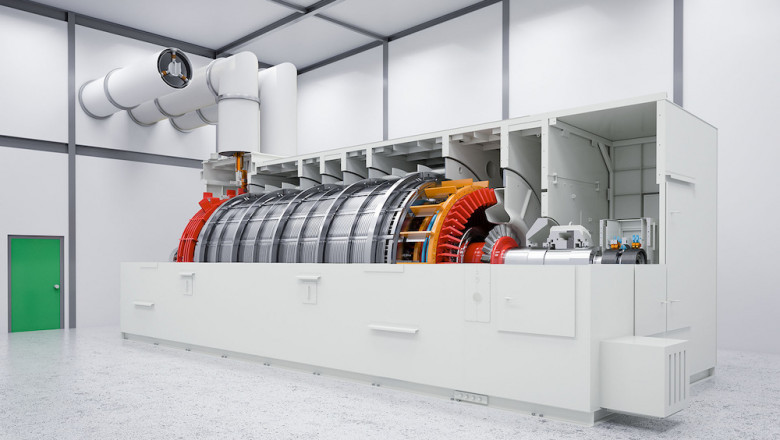views
The synchronous condensers market is gaining momentum as the global energy landscape evolves towards cleaner, more sustainable sources. These devices, often described as large rotating machines, play a crucial role in supporting grid stability by providing reactive power compensation, enhancing efficiency, and enabling the integration of renewable energy sources. As the world increasingly focuses on the clean energy transition, synchronous condensers are becoming an indispensable tool for grid operators to maintain system reliability while accommodating the variability of renewable energy.
Reactive Power Compensation
One of the primary functions of synchronous condensers is to provide reactive power compensation to the grid. Reactive power is necessary to maintain voltage levels, ensuring that electricity can flow efficiently through the transmission and distribution systems. While real power (or active power) is responsible for doing the actual work, reactive power ensures the proper voltage levels for system operations. As renewable energy sources such as wind and solar are often less reliable and lack built-in inertia, they can create instability in voltage levels.
Synchronous condensers offer a solution to this issue by providing dynamic reactive power support, especially in regions with high renewable penetration. By absorbing or generating reactive power, they help maintain the voltage within required limits, preventing voltage dips or spikes that could lead to equipment damage or grid blackouts. This capability makes synchronous condensers vital in regions with large-scale renewable installations or where traditional, inertia-based power plants are being phased out.
Efficiency Gains and Cost-Effectiveness
Synchronous condensers also contribute to efficiency gains in power systems. These devices enhance the overall transmission efficiency by reducing the need for additional infrastructure and compensating for reactive power locally. In traditional grid setups, reactive power is often compensated at distant points in the system, leading to transmission losses. Synchronous condensers, by providing reactive power directly at the generation point, reduce these losses and improve the overall efficiency of the power network.
Moreover, synchronous condensers are highly cost-effective in the long term. While their initial installation costs can be significant, their ability to provide essential grid services over extended periods of time justifies the investment. Their relatively low operating and maintenance costs compared to other grid stability solutions, such as statcoms (static compensators) or battery energy storage systems, further enhances their financial attractiveness.
Investment in Clean Energy Transition
As countries around the world increase their focus on decarbonizing the energy sector, the role of synchronous condensers in the clean energy transition becomes more pronounced. The transition from conventional, fossil-fuel-based power generation to renewable energy sources has created a need for new solutions to stabilize the grid. Synchronous condensers are particularly effective in this context, as they can replace some of the grid stability services previously provided by coal or natural gas plants.
Governments and private investors are pouring resources into grid modernization, which includes the deployment of synchronous condensers to ensure reliable power distribution even as renewable energy sources become the dominant form of generation. This is especially important as renewable sources, unlike conventional thermal plants, do not inherently provide the same inertia or reactive power support. Synchronous condensers can thus fill this gap, supporting the broader goals of the clean energy transition by enabling greater penetration of renewables without compromising grid reliability.
In many regions, such as Europe and North America, the move toward energy independence and carbon neutrality by 2030 or 2050 is driving the demand for these devices. Investments in smart grid technologies and energy storage are also accelerating the integration of synchronous condensers into the broader grid infrastructure, enhancing their role in balancing intermittent renewable power.
Conclusion
The synchronous condensers market is poised for significant growth, driven by their critical role in providing reactive power compensation, improving efficiency, and facilitating the clean energy transition. As renewable energy sources become more dominant, the need for grid stabilization solutions like synchronous condensers will increase. Their ability to support voltage regulation, enhance grid reliability, and reduce system losses makes them indispensable in modern energy systems. As investments in renewable energy infrastructure and grid modernization continue, synchronous condensers will remain a key player in ensuring that the transition to cleaner, more sustainable power is both reliable and efficient.






















Comments
0 comment